
Mission: Impossible
4 Stars- Director
- Brian De Palma
- Cast
- Tom Cruise, Jon Voight, Jean Reno, Ving Rhames, Emilio Esteves, Emmanuelle Béart, Henry Czerny, Vanessa Redgrave
- Rated
- R
- Runtime
- 110 min.
- Release Date
- 05/22/1996
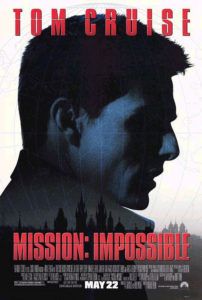
Brian De Palma’s Mission: Impossible is clever sleight-of-hand filmmaking on a Hollywood scale, earning the label of pure cinema. The director gives his audience every piece of information they need to solve the film’s puzzles and anticipate its twists, but his slick maneuvers outsmart us at every turn. Watch the title sequence, which links characters with many of their deaths that will occur by the end of the first act, though first-time viewers would never notice it. The kinetically edited sequence, set to composer Danny Elfman’s lively take on Lalo Schifrin’s original theme for the television show, closely associates characters with their eventual onscreen demise. For instance, a shot of a knife going into someone’s stomach is followed by Kristin Scott Thomas, whose character dies in the depicted stabbing. Emilio Estevez appears atop the elevator that will crush his chummy spy. Ingeborga Dapkūnaitė stands next to the car that will detonate with her inside. This is characteristic of De Palma’s agenda throughout the film. He gives the viewer all the visual evidence they need to figure out what will happen, yet he remains so confident as a filmmaker that he can show the viewer what will occur while at the same time concealing it. It’s the mark of a true master who demands and rewards an attentive audience, and one of the reasons the 1996 film remains the franchise’s best.
Today, the film franchise’s legacy overshadows its role in a wave of TV-to-film adaptations to hit theaters in the 1990s, the majority of which were nothing short of trivial. In retrospect, silly but fun titles like The Adams Family (1991) and its 1993 sequel now seem glorious when compared to The Brady Bunch Movie (1995) or The Flintstones (1994) and their sequels. And let’s not forget about The Avengers (1998), The Beverly Hillbillies (1993), Coneheads (1993), McHale’s Navy (1997), and The Saint (1997). Often made with kitsch and historical irony by placing an outdated television idea within a modern movie, these commercial projects were throwaways at best. Out from this haze of mediocrity appeared a few rare exceptions: The Fugitive (1993) earned Harrison Ford’s co-star Tommy Lee Jones an Oscar; Twin Peaks: Fire Walk with Me (1992) was just as intriguing as David Lynch’s show; X-Files: Fight the Future (1998) proved entertaining for die-hard fans of the series; and, of course, the films based on Star Trek: The Next Generation were all hits, with First Contact (1996) becoming an instant sci-fi classic. As he had done with The Untouchables in 1987, De Palma transformed a known property into something wholly stylish, unique even, with Mission: Impossible.
De Palma’s approach was anything but campy or nostalgic, as other based-on-a-TV-show productions from this era had been; rather, the film is as distant from a television production as De Palma could make it. With his bag full of cinematic trickery, De Palma devised the story with David Koepp (Jurassic Park, 1993), Robert Towne (Chinatown, 1994), and Steve Zailian (Schindler’s List, 1993) to deliver a richly complicated spy story wrapped in the director’s signature, elegant control over the medium. A commercial property though it may be, De Palma elevates the material into something not dulled for his audience’s sake, as a customary Hollywood blockbuster might be. Instead, his enthusiasm for spy mechanics propels a sharply suspenseful story so uncompromising in its intricacy that many walk away scratching their heads, but entertained. That kind of bravery is bold and connects not with the majority of mainstream audiences, but with sophisticated viewers who want something more from their entertainment.
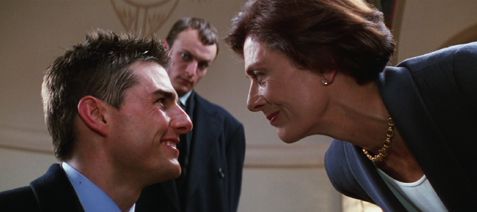 While he embraces the spy suspense genre, and a Hitchcockian one at that, De Palma resists needless devices, such as brimming-with-emotion characters and sex appeal, to tie his audience to the proceedings. For the director of Dressed to Kill (1980) and Body Double (1984), the conspicuous lack of sex in Mission: Impossible became a major setback for many critics, although audiences didn’t seem to mind. The film earned $180 million in the US and another $275 million worldwide. Critics, though impressed with De Palma’s virtuosity behind the camera as usual, still balked at the “confusing” story and its pointed lack of humor. Variety remarked, “No James Bond wit here—or Bruce Willis smirk, for that matter. Mission Impossible just might be the most dour sexless piece of escapism in memory.” Beyond comic relief, critics also complained about its characters’ deficient personal motivations. Mick LeSalle of the San Francisco Chronicle wrote, “It can never unravel satisfactorily because there’s nothing simple at its center, just more confusion.” But then, that was the point, and critics were missing it—along with the considerable charm and energy star Tom Cruise brings to his role. De Palma and his writers devoted themselves to the genre without compromise, updating the TV show’s Cold War roots into a modern setting as equally chilly and driven by contemporary technologies and classic paranoia.
While he embraces the spy suspense genre, and a Hitchcockian one at that, De Palma resists needless devices, such as brimming-with-emotion characters and sex appeal, to tie his audience to the proceedings. For the director of Dressed to Kill (1980) and Body Double (1984), the conspicuous lack of sex in Mission: Impossible became a major setback for many critics, although audiences didn’t seem to mind. The film earned $180 million in the US and another $275 million worldwide. Critics, though impressed with De Palma’s virtuosity behind the camera as usual, still balked at the “confusing” story and its pointed lack of humor. Variety remarked, “No James Bond wit here—or Bruce Willis smirk, for that matter. Mission Impossible just might be the most dour sexless piece of escapism in memory.” Beyond comic relief, critics also complained about its characters’ deficient personal motivations. Mick LeSalle of the San Francisco Chronicle wrote, “It can never unravel satisfactorily because there’s nothing simple at its center, just more confusion.” But then, that was the point, and critics were missing it—along with the considerable charm and energy star Tom Cruise brings to his role. De Palma and his writers devoted themselves to the genre without compromise, updating the TV show’s Cold War roots into a modern setting as equally chilly and driven by contemporary technologies and classic paranoia.
Those who failed to recognize the genius of the film failed to see that De Palma fully devotes his picture to exciting but less romantic ideas about the spy genre. This is to say that he removes the occasional melodrama of the James Bond series, its sexiness, and low-brow accessibility. The film minimizes the personal drama that, in Hollywood anyway (and later in 2006’s Mission: Impossible III), goes with the territory. That these characters are smarter than you or me, and their schemes are not simple, is a given. Consider this: Would real CIA agents—or, in this case, IMF (Impossible Mission Force) agents—have a deeply personal stake in every operation? Would they quip endlessly? Would they wink at their hidden cameras and say, “Why am I always in the wrong place at the wrong time?” De Palma doesn’t think so. The film’s scenario and viewer involvement stems from the task at hand, how the plot twists and turns as the audience races to catch up, and how characters trained to be reserved use their skills in inventive ways. It might be called unemotional as a result, but are real-life spies known for their dramatics?
Long before filming began, Tom Cruise arrived at Paramount Pictures in the early 1990s with his business partner Paula Wagner to establish Cruise/Wagner Productions, and his first pitch was to adapt the 1960s show Mission: Impossible, for which Paramount owned the rights. After toying with plot concepts with Sydney Pollack, his director on The Firm in 1993, Cruise approached De Palma to direct. Fresh off a commercial and artistic success with Carlito’s Way (1993), De Palma had recovered from his failure on The Bonfire of the Vanities (1990), and Paramount was prepared to present the helmer of their hit The Untouchables with another major studio film. As writers toiled away to devise a script the filmmakers could agree upon, a basic plot was set into place, and De Palma began designing and filming elaborately conceived suspense sequences without a finished script. Writers wrote around De Palma’s demands, including his desire to use Prague as a locale; the city had just been named the new capital of the Czech Republic in 1993, and few Hollywood productions had considered filming there. De Palma opens the film in this historical European city so rich with Gothic architecture, gradually moving the story, and his audience, from a Cold War backdrop into the modern age—a clever metaphor for the adaptation itself.
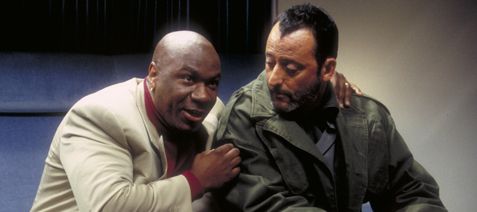
Mission: Impossible acknowledges the passage of history into the present, and even the future, with its employment of then-futuristic spy gizmos and latex masks. From postwar Prague to CIA Headquarters in Langley, the setting reminds us the Cold War has ended, and espionage has moved away from Communist paranoia. Prague itself brings to mind the Czech’s Velvet Revolution from Stalinism into capitalism, making De Palma’s choice for the city a significant one; at the same time, his CIA remains a tired overseer to the film’s fictional IMF (an abbreviation whose meaning is never revealed within the film, strangely enough). But the plot twists suggest this old-to-new theme as well. John Voight plays old-hand IMF agent Jim Phelps (formerly Peter Graves’ lead character from the TV show), who, through the course of the film, is revealed as the villain, leaving his younger apprentice, Ethan Hunt (Cruise), to assume the hero’s position. And then there’s De Palma’s choice of action sequences. For his finale, De Palma places Cruise atop a 200-mph TGV racing from France to England; in this sequence, he seems to contemporize Hitchcock’s oft-used (see The Lady Vanishes, North by Northwest, etc.) suspense machine, the locomotive, into a newer, faster, more modern version of a classic thriller engine.
The plot took punching bag critical hits for being “baffling” and not actionized enough for a summer blockbuster. It seems many critics went into the picture expecting an action movie but got a spy-thriller instead. This trend of audiences and critics feeling puzzled by the plot has always puzzled me. It’s not that complicated, is it? The story follows Phelps and his group of agents, headed by Hunt, as they attempt to prevent and gather proof of the illegal sale of a non-official cover (NOC) list containing the identities of IMF agents and their code names. When their mission goes dreadfully wrong, all of Hunt’s team, save for himself and fellow agent Claire Phelps (Emmanuelle Béart), end up dead. Hunt learns the supposed NOC list sale was a ruse, part of an internal CIA mole hunt. And with Hunt being the sole survivor, his boss, Kittridge (Henry Czerny), determines that Hunt is the traitor. Hunt escapes capture and resolves to expose the real traitors by collecting the actual NOC list, which is safe in CIA headquarters in Langley, and using it to draw them out. Hunt acquires the list with his newly formed band of disavowed IMF misfits, including hacker Luther Stickell (Ving Rhames) and go-getter Krieger (Jean Reno), and strikes an agreement with arms dealer Max (Vanessa Redgrave) to arrange a meet with the buyer on the TGV from Paris to London. Once on the train, Hunt discovers the buyer was Phelps, who, in league with Claire and Krieger, sought millions from the NOC list sale. In a perilous (physics-defying) train top chase involving a helicopter in Channel Tunnel, Hunt stops Phelps and prevents the list’s contents from getting out.
Critics have noted scarce personalities for the film’s characters, but there’s much by way of development here, regardless of De Palma’s aforementioned adherence to making an emotionally austere spy thriller. Hunt’s mentor Phelps (who we never suspect because, A. He dies in the opening sequence, and because, B. Phelps was the leading character from the TV show) betrays Hunt, leaving his wife Claire to seduce him. But Claire begins to feel something for her mark and tries to protect Hunt on the TGV; she dies for her mistake. This is a film where emotion plays a deceptively subtle role, and in a world where spies are trained to reserve their feelings no less. Hunt’s world crumbles when his team dies in the opening; what’s left is his panic, his uncertainty and paranoia, and his desire to settle scores. If there was no emotion, there would be no conflict. Hunt would just walk away. But Hunt’s need to clear his name and find those responsible becomes an emotional ambition once Phelps reveals himself to be alive after all, appearing to Hunt in Liverpool Street station after the team acquires the NOC list from Langley.
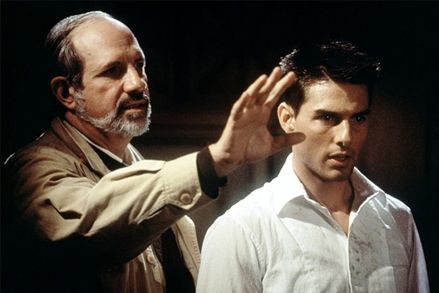 In this sequence, Phelps tells Hunt that Kittridge is the mole. Hunt pretends to talk through how Kittridge could have done it, but at the same time, De Palma cuts together images of how Hunt is actually visualizing that Phelps is the culprit—in a beautiful, smart, and efficiently told sequence that brings an added element of dramatic irony to the finale. It’s also representative of De Palma’s formal agenda to show, not tell, the audience what they need to know—a crafty form of pure cinema. Hunt must maintain his cover with Phelps, so as not to let him know what he knows. Every character within the film has one or more covers, so to claim Mission: Impossible is without emotion is to ignore the nature of The Spy—a figure who is always pretending, his real feelings masked. A greater source of involvement stems from Cruise’s natural onscreen magnetism; in his delightfully flirtatious exchanges with Redgrave, for example, he’s charming and filled with guile. His performance is direct, and his presence always engrossing, creating a rich characterization. Furthermore, Cruise’s insistence on performing his own stunts (aside from his exterior TGV sequence, of course) lends the film a remarkable degree of authenticity. The most impressive of his own stunts is De Palma’s incredible scene where the “Akvarium” restaurant shatters with a tidal wave explosion, while Cruise, Hollywood’s best runner, leaps from the rushing water and sprints away.
In this sequence, Phelps tells Hunt that Kittridge is the mole. Hunt pretends to talk through how Kittridge could have done it, but at the same time, De Palma cuts together images of how Hunt is actually visualizing that Phelps is the culprit—in a beautiful, smart, and efficiently told sequence that brings an added element of dramatic irony to the finale. It’s also representative of De Palma’s formal agenda to show, not tell, the audience what they need to know—a crafty form of pure cinema. Hunt must maintain his cover with Phelps, so as not to let him know what he knows. Every character within the film has one or more covers, so to claim Mission: Impossible is without emotion is to ignore the nature of The Spy—a figure who is always pretending, his real feelings masked. A greater source of involvement stems from Cruise’s natural onscreen magnetism; in his delightfully flirtatious exchanges with Redgrave, for example, he’s charming and filled with guile. His performance is direct, and his presence always engrossing, creating a rich characterization. Furthermore, Cruise’s insistence on performing his own stunts (aside from his exterior TGV sequence, of course) lends the film a remarkable degree of authenticity. The most impressive of his own stunts is De Palma’s incredible scene where the “Akvarium” restaurant shatters with a tidal wave explosion, while Cruise, Hollywood’s best runner, leaps from the rushing water and sprints away.
But the film’s highlight remains the robbery sequence within CIA headquarters, designed by De Palma to proceed with a minimum of dialogue and a breathless degree of suspense. It finds Hunt and company infiltrating a secure room (protected by card key and number code locks, a retinal scan, motion and heat sensors, and an armed attendant), entering through a vent in the ceiling to literally suspend Hunt mid-air, but also suspend the audience as we watch him execute this now-iconic theft. De Palma’s mastery of such sequences stems back to his origins as, what some have called, a Hitchcock imitator. There’s no denying that De Palma has employed Hitchcockian motifs and visual sequences from Vertigo (1958) or Rear Window (1954) in his respective films Obsession (1976) or Dressed to Kill; but in the cases of Blow Out (1981), Mission: Impossible, and later with Snake Eyes (1998) and Femme Fatale (2002), the director uses indirect inspiration to evoke Hitchcockian camerawork and bravado suspense. The robbery is not the only moment when De Palma wows his audience with his craft, however; there are also the aforementioned aquarium scene, Hunt’s late meeting with Phelps in Liverpool, and the entire TVG sequence (designed by De Palma, executed in part by Industrial Light & Magic).
What remains is a film in which De Palma uses his considerable artistry and skill to gracefully embrace the possibilities of a spy-thriller, instead of supplying his audience with mind-numbing shootouts and car chases. In doing so, Mission: Impossible has become a Hollywood blockbuster overlooked and underappreciated for its purity of style, for the intelligence behind its storytelling, and for the sheer momentum of its clever plot, all because it lacks typical crowd-pleasing elements. De Palma and his screenwriters refuse to dumb down the proceedings for their audience, and recognition of his sophisticated filmmaking has been a casualty of the film’s unfortunate misreadings, which suggest an audience should “check your brain at the door” to enjoy. Quite the contrary. The film is much more than an excuse to explore impressive set-pieces or flash special FX onscreen, but a spy yarn in which mode and method operate in unison. As a result, De Palma demands an attentive, smart audience. To be sure, his genius resides in the details, of which there are many to savor and rediscover. By the end, viewers have altogether forgotten about the film’s TV show origins, because De Palma has made the experience such a purely cinematic one—devious enough, smart enough, and exciting enough to challenge and enthrall sophisticated and mainstream viewers alike.






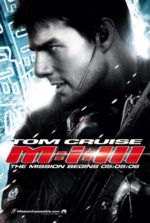 Mission: Impossible III
Mission: Impossible III  Mission: Impossible – Ghost Protocol
Mission: Impossible – Ghost Protocol 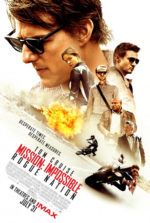 Mission: Impossible – Rogue Nation
Mission: Impossible – Rogue Nation